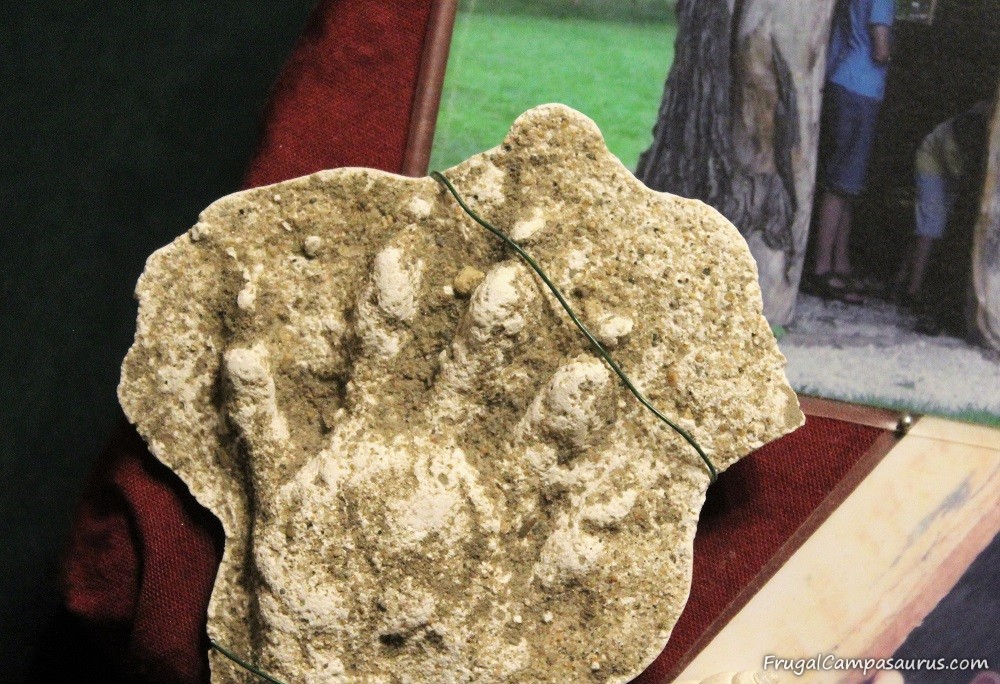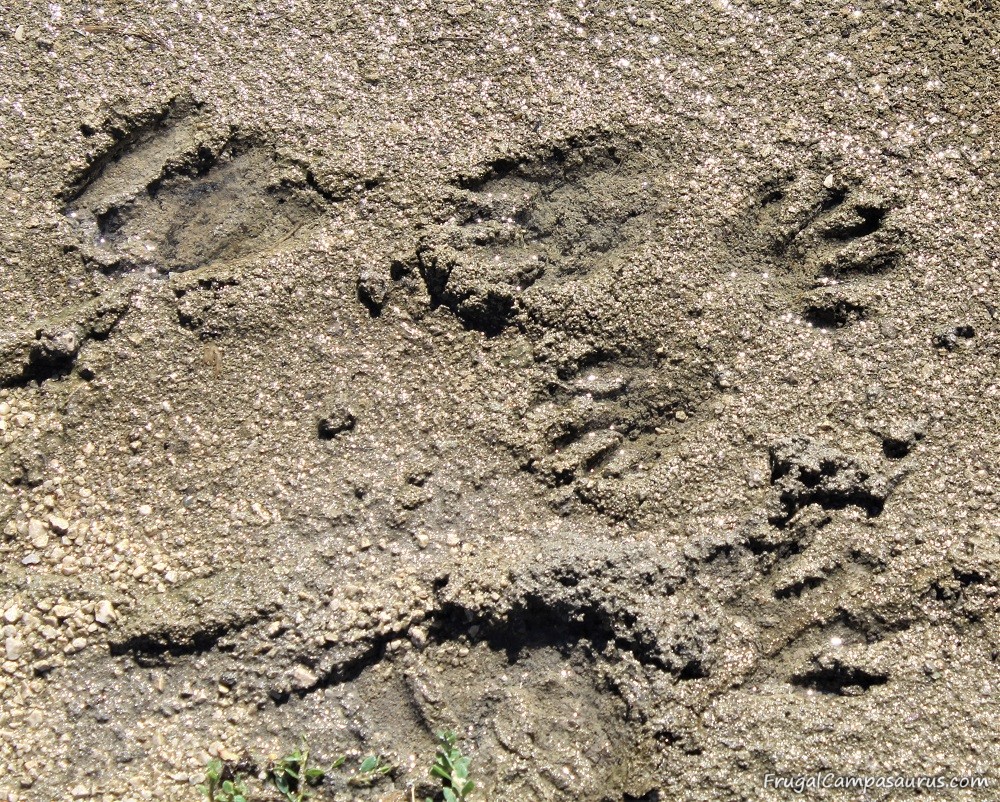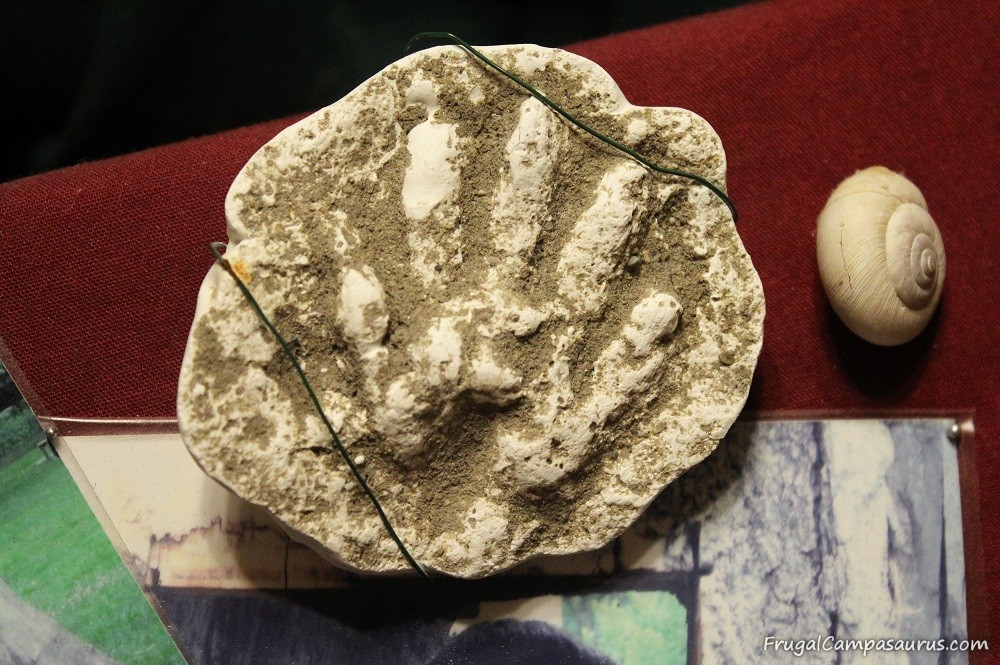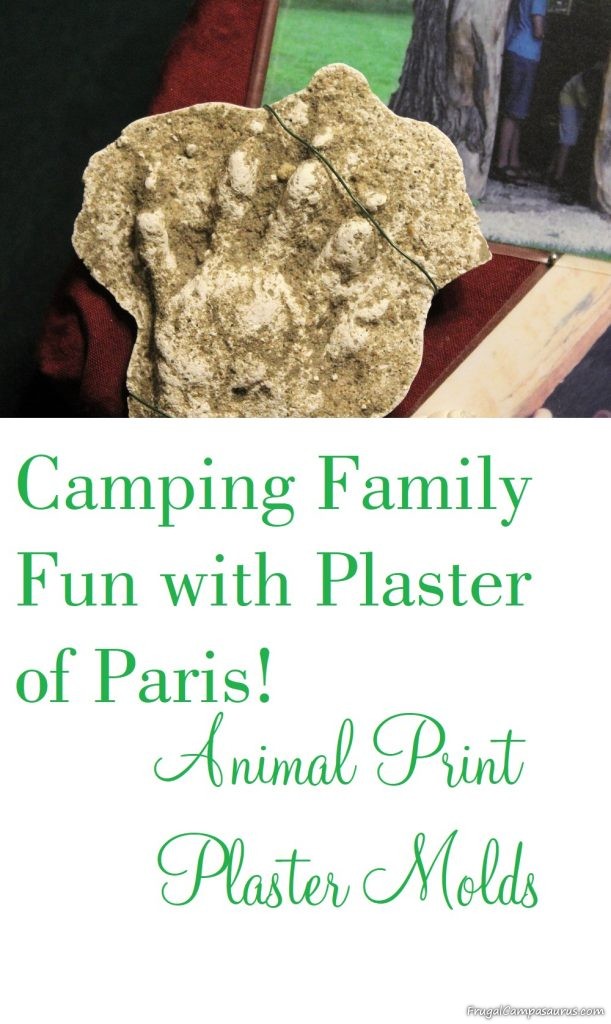Good morning! I hope this finds everyone healthy, safe and busy! I’m so glad that we went camping a few weeks ago, even though the weather was hot! Our morning canoe ride reminded me of a fun camping/hiking project: Animal Print Plaster Molds!
Usually, the shore of our favorite state park is rocky, but they have lowered the water level to do dam improvements. Along the sandy and muddy shore, there were lots of raccoon prints near empty mussel shells. Even though canoeing was harder with the lower water level, it would have been a perfect spot for Animal Print Plaster Molds.
The plaster molds are easy and fun to make.
Years ago, we made raccoon prints with Plaster of Paris on a camping trip. The prints are still hanging on the camper wall!
That campground was along a creek, so we had fun wading in the water and looking for rocks. I love rocks, but there were also raccoon prints in the sandy, muddy shore. Since I wanted to try making animal prints tracks molds with the kids, I had packed Plaster of Paris in the camper that year.
Finding the Right Animal Prints
We searched for complete raccoon tracks in the mud. There were many partial prints, but we searched and found a few impressions of the whole paw.
We also searched for the right type of print- not too wet or muddy. Standing water or really squishy mud will not make clearly defined Plaster of Paris molds. So, we looked for prints that were not too close to the water’s edge.
We also looked for prints that were not in the middle of a hiking path. I would hate to have someone (or some animal) step on the Plaster of Paris while it was drying. It would be messy and not make a good animal track print.
Making the Animal Print Mold
After finding the right print in the right location, making the Animal Print Plaster Mold is easy.
We had about 1/3 -1/2 cup of Plaster of Paris in Ziploc baggies and added water from the creek. The kids squished it in the baggy to mix it together, so it wasn’t messy at all!
We didn’t measure, but just added a little water until it was the consistency of cake batter. Pourable, but thicker than French Breakfast Puff (or pancake) batter. A thinner mixture will work, but takes longer to harden and dry.
We waded in the creek, searching for rocks, while the raccoon prints dried. After about 45-60 minutes, they were hard enough to pick up. Later, we gently cleaned off the sand with our fingers and a paper towel. Don’t clean them with water; the Plaster of Paris will dissolve.
The wetness of the sand/mud, how much water was added to the baggy, thickness of the plaster and temperature of the day can all affect how long the Plaster of Paris takes to harden enough to pick them up.
When you first pick them up, lift the molds carefully- they are still tender and easy to crack. They can take a few days to dry completely.
Plaster of Paris does need a warning– if you are mixing it in the camper (or at home), none of it goes down the drain!! I don’t even rinse a spoon or baggy in the sink, it can harden and plug up pipes.
We left our raccoon prints white and sandy, but I have kid’s hand prints that were spray painted. If they are kept dry, they can last a long time. I am so happy that our raccoon prints are still up after 10 years!
I hope you can try Animal Print Plaster Molds; it is an easy, fun camping project. When you are hiking or exploring a creek bed, Dry Plaster of Paris can be easily taken along in a Ziploc baggy. If you happen to find the perfect animal track print, it is easy to add water from a creek or water bottle. I am going to remember to take some on canoe rides, maybe we will see more animal prints soon!
Happy Camping (or squishing Plaster of Paris!)
Frugal Campasaurus





